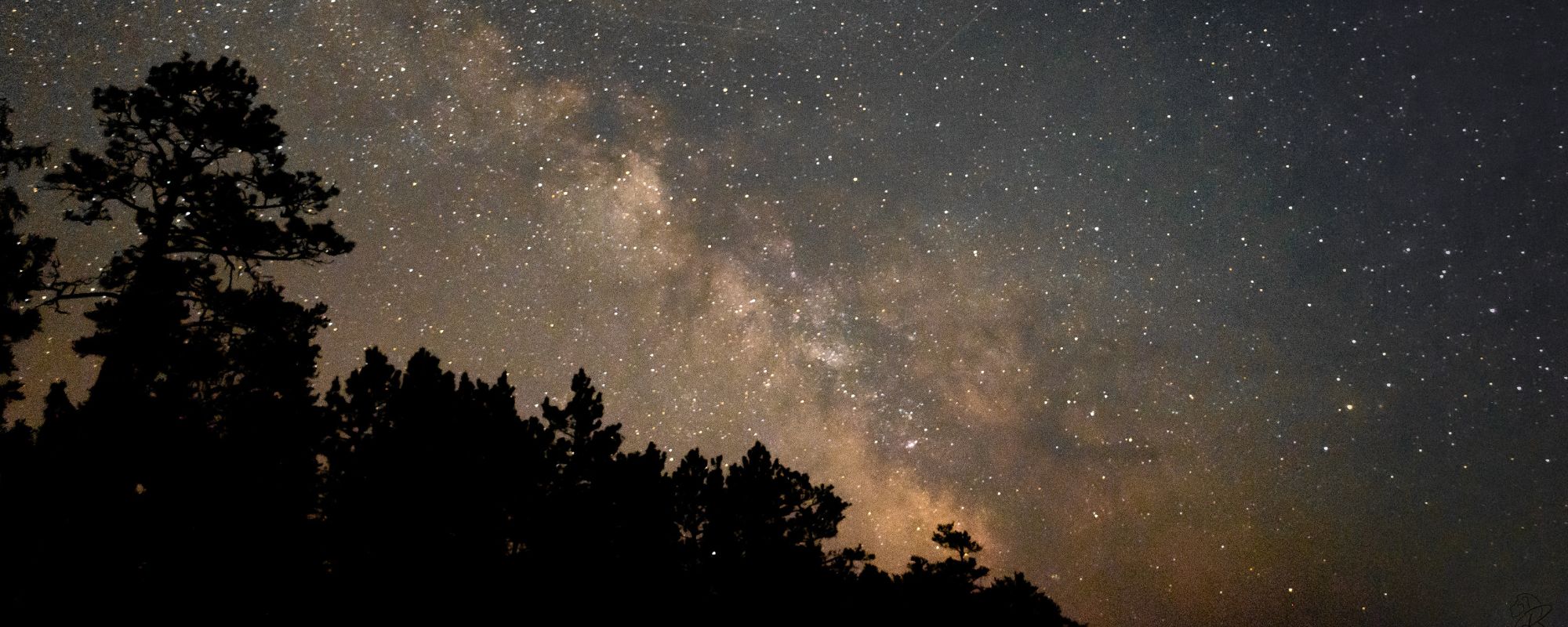
Welcome to the Ontario Parks “Eyes on the Skies” series. This space (see what we did there?) will cover a wide range of astronomy topics with a focus on what can be seen from the pristine skies found in our provincial parks.
While spring “technically” begins in March, most of us living in cold climates tend to celebrate May as the true start to the season.
Here are our astronomical highlights for May, 2025:
~
The sun
Having passed the spring equinox, the sun continues to rise (and set) further north of due east (and due west). And as usual, when the sun appears more northerly in the sky, the full moon that month appears almost equally further south.

Sunrise and sunset times:
| May 1 | May 15 | May 31 | |
| Sunrise | 6:11 a.m. | 5:53 a.m. | 5:39 a.m. |
| Midday | 1:23 p.m. | 1:22 p.m. | 1:23 p.m. |
| Sunset | 8:34 p.m. | 8:52 p.m. | 9:09 p.m. |
The moon
The moon has long captivated observers of all ages.
May’s lunar phases of the moon occur as follows:

~
The planets
Jupiter and Mars are still quite visible in the western sky at sunset. Jupiter sets around 11:00 p.m. and Mars sets around 2:30 a.m.
In the morning sky, Venus and Saturn are visible in the eastern sky just a half an hour or so before sunrise (you will need a good horizon and binoculars will help for Saturn).
Meteor showers
On the night of May 5 into the morning of May 6, you can enjoy the Eta Aquariid Meteor Shower.
While this meteor shower is not nearly as famous nor prolific as the Perseids, Geminids, or Quadrantids, it can be quite enjoyable to watch, especially in the pre-dawn early morning hours.
Because this year’s shower falls close first quarter moon, viewers from the dark skies of our provincial parks may see upwards of 30 meteors per hour after 1:00 a.m.
~
Featured constellations
Madoodiswan (the Sweat Lodge)
In this month’s featured constellations, we will first discuss an Anishinaabek constellation that is prominent at this time of the year: Madoodiswan (the Sweat Lodge).
Madoodiswan appears amongst the same stars as the Greek constellation of Corona Borealis, and is of high significance for many Indigenous peoples.
Learn more about its stories and traditional associations here.

Boötes the Herdsman, Virgo the Maiden, and Libra the Scales
In last month’s post, we featured the Ursa Major, the Great Bear (Big Dipper) and Ursa Minor, the Little Bear (Little Dipper).
In this month’s edition, we will talk about constellations that are ideal for warm weather observation: Boötes the Herdsman, Virgo the Maiden and Libra the Scales.

Find more information on this month’s constellations.


